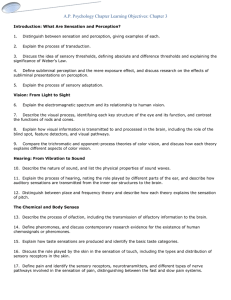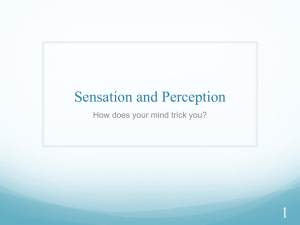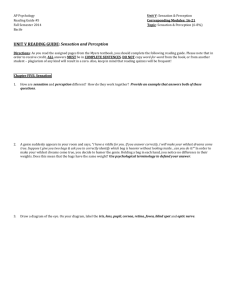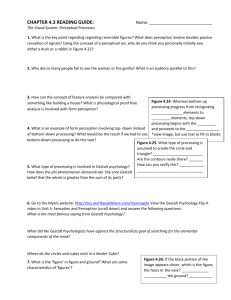Psychology 11
advertisement
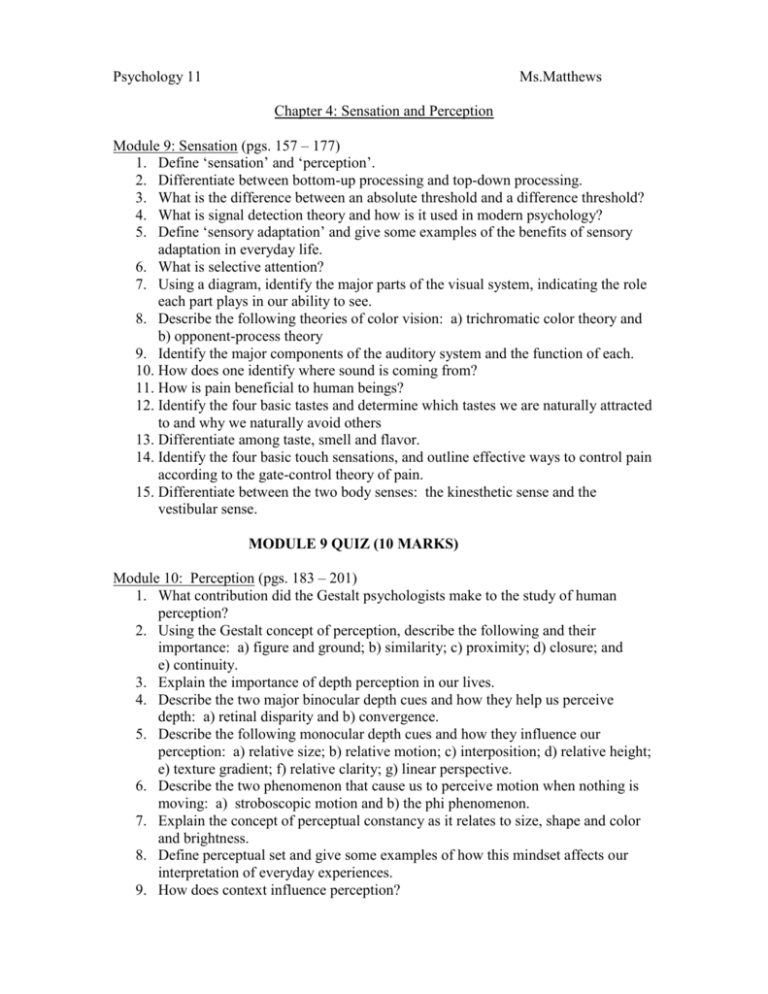
Psychology 11 Ms.Matthews Chapter 4: Sensation and Perception Module 9: Sensation (pgs. 157 – 177) 1. Define ‘sensation’ and ‘perception’. 2. Differentiate between bottom-up processing and top-down processing. 3. What is the difference between an absolute threshold and a difference threshold? 4. What is signal detection theory and how is it used in modern psychology? 5. Define ‘sensory adaptation’ and give some examples of the benefits of sensory adaptation in everyday life. 6. What is selective attention? 7. Using a diagram, identify the major parts of the visual system, indicating the role each part plays in our ability to see. 8. Describe the following theories of color vision: a) trichromatic color theory and b) opponent-process theory 9. Identify the major components of the auditory system and the function of each. 10. How does one identify where sound is coming from? 11. How is pain beneficial to human beings? 12. Identify the four basic tastes and determine which tastes we are naturally attracted to and why we naturally avoid others 13. Differentiate among taste, smell and flavor. 14. Identify the four basic touch sensations, and outline effective ways to control pain according to the gate-control theory of pain. 15. Differentiate between the two body senses: the kinesthetic sense and the vestibular sense. MODULE 9 QUIZ (10 MARKS) Module 10: Perception (pgs. 183 – 201) 1. What contribution did the Gestalt psychologists make to the study of human perception? 2. Using the Gestalt concept of perception, describe the following and their importance: a) figure and ground; b) similarity; c) proximity; d) closure; and e) continuity. 3. Explain the importance of depth perception in our lives. 4. Describe the two major binocular depth cues and how they help us perceive depth: a) retinal disparity and b) convergence. 5. Describe the following monocular depth cues and how they influence our perception: a) relative size; b) relative motion; c) interposition; d) relative height; e) texture gradient; f) relative clarity; g) linear perspective. 6. Describe the two phenomenon that cause us to perceive motion when nothing is moving: a) stroboscopic motion and b) the phi phenomenon. 7. Explain the concept of perceptual constancy as it relates to size, shape and color and brightness. 8. Define perceptual set and give some examples of how this mindset affects our interpretation of everyday experiences. 9. How does context influence perception? 10. Describe the following illusions: a) the Muller-Lyer illusion; b) the Ames room illusion. 11. What is ESP? What criticisms have been made of ESP research? 12. What do people believe in ESP? MODULE 10 QUIZ (10 MARKS) CHAPTER 4 TEST (Date:___________)


